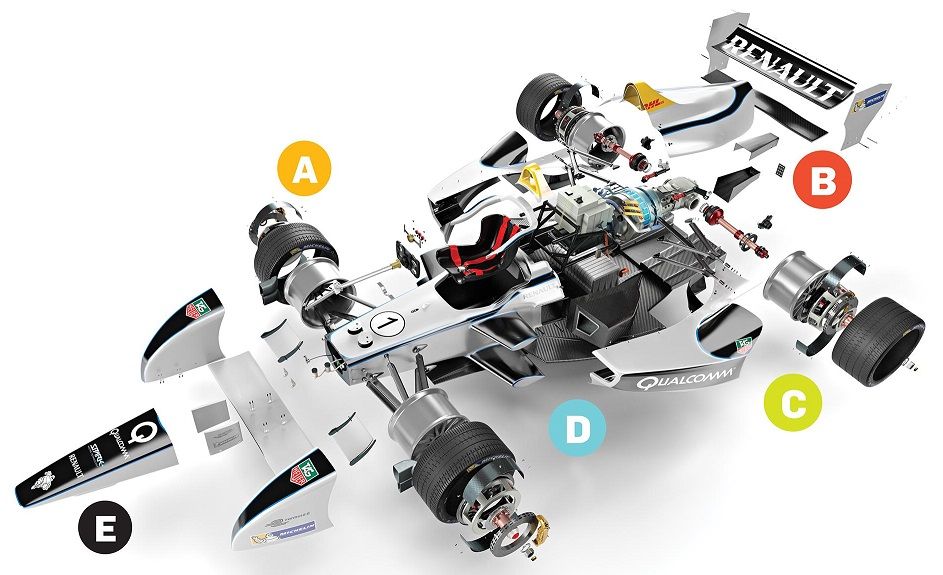The Electric F1 Racecar: How It Works
Dissecting the the car that shows what electric vehicles can really do
The Formula E Racecar
This year, the first fully electric racing series will debut in cities around the globe. Called Formula E, the new Fédération Internationale de l’Automobile (FIA) championship is the zero-emissions complement to the Formula One (F1) international racing series.
Formula E will be open to any vehicle that meets FIA technical specifications, an effort to motivate manufacturers to push the bounds of electric-vehicle technology. But for the inaugural season, all 10 teams (each with two drivers) will race just one model: the Spark-Renault SRT_01E. With oversight from Renault, the French company Spark Racing Technology will build 42 of them, incorporating parts from F1 heavyweights Dallara (chassis), Williams (batteries), and McLaren (powertrain and electronics). When the first race starts, in Beijing in September, the SRT_01E will show bystanders just what electric vehicles can do.
A) Sound
F1 racecars typically produce 130 decibels at high speeds, but the SRT_01E generates only 80—slightly more than a conventional road car. The “modern, futuristic” sound will come entirely from the tires, transmission, and wind buffeting. The FIA may require cars to produce an artificial sound to warn pit crews as the vehicles approach.
B) Powertrain
Two McLaren motor generator units (MGUs)—the same ones used in the McLaren P1 hybrid supercar—link to a six-speed sequential transmission and power the rear wheels. Rather than requiring a rebuild after each race like an internal-combustion engine, the MGUs should last two years.
C) Push-To-Pass
During the race, the car’s motor will be restricted to a power-saving mode of 180 brake horsepower to conserve battery life, but drivers can strategically boost it to 270 bhp for a few seconds at a time. This push-to-pass system will enable drivers to overtake competitors as they exit a corner or accelerate down straightaways to defend against them.
D) Tires
Formula E will be the first single-seater series to require all-weather tires. The bespoke Michelins are treaded for use in both wet and dry conditions. Their 18-inch diameter provides better fuel efficiency than smaller tires, translating to extra power or additional battery life.
E) Pit Stops
Each team has four vehicles, and each driver must make two pit stops to switch cars during the one-hour race. At speeds of 150 mph, the batteries last about 30 minutes (and can’t be swapped out). Qualcomm will adapt its Halo wireless charging to safety cars this year and to racecars in season two.
-

































